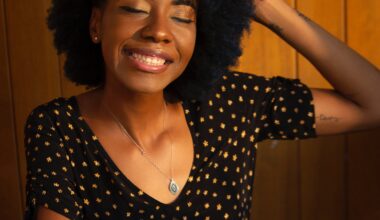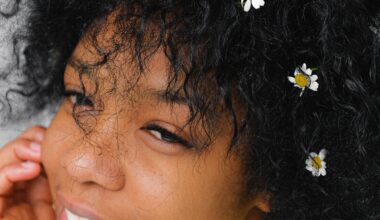Unveiling the Truth: Can Hair Straightening Products Lead to Cancer in Just Months?
In the modern age of beauty and aesthetics, hair straightening products have become a staple in many individuals’ grooming arsenals. However, as with many products we frequently use, there are whispers and concerns about their potential risks, notably their link to cancer. With alarming headlines and mixed messages bombarding us daily, it’s crucial to separate fact from fiction. This article aims to dive deep into the concerns, the research, and the truths about hair straightening products and their potential cancer risk.
Key Takeaways:
- An exploration into why there are concerns about hair straightening products.
- A review of scientific research on the potential links to cancer.
- Specific hair straightening products and their possible risks.
- Myths and misconceptions debunked based on evidence.
- Measures to ensure safety while using these products.
- Delving into women’s health concerns related to hair straightening.
- Alternatives to traditional hair straightening products.
- Resources for those looking to delve even deeper into this subject.
Understanding the Concerns
The allure of sleek, straight hair has made hair straightening products indispensable for many. But behind the silky results lie growing concerns about potential health risks. What are the reasons for these apprehensions? And why is it essential to address them?
The Rise in Popularity and Concerns
Hair straightening, once a luxury, has now become an almost routine procedure for many. Whether it’s for a special occasion or regular maintenance, these products promise transformed locks in minutes. But as their usage skyrocketed, so did the concerns. From informal discussions at hair salons to more serious debates among health professionals, the core question remains: Do certain hair straightening products cause cancer?
The Heart of the Matter
Among the various concerns, a significant one is the composition of these products. Some contain chemicals known to be harmful, while others have compounds whose long-term effects are still under study. It’s not just about the immediate aftermath of hair treatments; it’s the potential long-term effects that have everyone talking.
Exploring the Research
The concerns surrounding hair straightening products and their potential cancer risks aren’t born from mere speculation. They have their roots in scientific research and studies that have attempted to decode this connection. So, what does the research say? And how much of it should we take to heart?
An Overview of Scientific Studies
Over the years, numerous studies have examined the relationship between hair products and cancer. Some research points toward a possible connection, especially when these products are used frequently and over extended periods. Meanwhile, other studies show inconclusive results, emphasizing the need for further investigation.
Findings and Associations
While no study can categorically state that hair straightening products cause cancer, some associations have raised eyebrows. For instance, certain chemicals found in these products have been labeled as potential carcinogens. There’s also been a focus on specific types of cancer, such as uterine cancer, where some research suggests a potential link with regular use of hair straighteners.
However, it’s crucial to approach these findings with a balanced perspective. The research landscape is vast, with different methodologies and diverse sample sizes, making it essential to consider the broader picture rather than individual studies in isolation.
Which Hair Straightening Products Are Linked to Cancer?
With research painting a somewhat ambiguous picture, it’s vital to pinpoint the specific products or ingredients that have raised concerns. After all, not all hair straighteners are created equal. Let’s delve into the specifics of what you might want to watch out for.
Spotlight on Ingredients of Concern
While the complete list of ingredients in hair straightening products is vast, a few have been spotlighted due to potential risks. Chemicals like formaldehyde, a known carcinogen, have been found in some hair straightening treatments. When heated, formaldehyde can release fumes, which, when inhaled, can pose serious health risks.
Potential Risks and Warnings
Products that contain or release formaldehyde have been associated with various health concerns, including respiratory issues and, as highlighted, potential cancer risks. The concern intensifies for salon professionals who are frequently exposed to these chemicals. Some studies suggest a potential link between these products and a higher risk of developing uterine cancer, though it’s essential to note that the evidence isn’t definitive.
Transparency and Product Labeling
An important aspect of this discussion is product labeling. Consumers rely on labels to make informed decisions. However, not all products that contain or release formaldehyde are transparent about it on their packaging. This lack of transparency makes it all the more crucial for consumers to be educated and vigilant.
Hair Straightening and Cancer Risk: Debunking Myths
The realm of beauty and personal care is no stranger to myths and misconceptions, especially when it’s linked to health risks. When fear and misinformation mix, they create a potent cocktail of confusion. Let’s strive to separate the fact from fiction.
Myth: All Hair Straightening Products Cause Cancer
Fact: It’s crucial to understand that not all hair straightening products are linked to cancer. While some ingredients raise concerns, many products on the market are deemed safe for use. It’s about being informed and choosing products with a transparent ingredient list.
Myth: Occasional Use is Just as Risky as Regular Use
Fact: The frequency of exposure does matter. Salon professionals or individuals who use certain products regularly might be at a higher risk compared to someone who straightens their hair occasionally. It’s the prolonged and repeated exposure that’s often under the scanner in research studies.
Myth: Only Cheap Products are Risky
Fact: The price tag doesn’t always dictate safety. Some high-end brands have also been scrutinized for their ingredient choices. It’s less about the cost and more about the composition of the product.
Myth: If It’s Available in Stores, It’s Safe
Fact: Regulatory practices vary worldwide. Just because a product is on the shelves doesn’t guarantee its safety. Consumers should practice due diligence, research products, and stay updated on findings and recommendations from trusted health organizations.
Safety Measures and Precautions
Beauty needn’t come at the expense of health. Being informed and taking precautions can strike a balance between achieving that perfect hair day and safeguarding one’s wellbeing. Here are some pointers to consider if hair straightening is part of your beauty regimen.
Know Your Ingredients
Before opting for a hair straightening treatment, be proactive. Investigate the list of ingredients. If a product is reluctant to share its contents or if you find known harmful chemicals, it might be worth reconsidering your choice.
Ventilate Your Space
Especially relevant for salon professionals, ensuring proper ventilation can minimize the inhalation of potentially harmful fumes. Even at home, if you’re using a product that produces a strong odor, open windows and ensure good airflow.
Limit Frequency
While everyone’s routine varies, consider if you can reduce the frequency of treatments. Perhaps there are alternative styling methods or products that can achieve similar results with less risk.
Opt for Formaldehyde-Free Options
There are numerous hair straightening products that are free from formaldehyde and its derivatives. If you’re concerned about potential risks, consider opting for these alternatives.
Stay Updated
Research is ongoing, and new findings emerge regularly. Stay updated by following trusted health organizations and being receptive to new information.
Consult Professionals
Discuss your concerns with your hairstylist or dermatologist. They might offer insights into safer products and practices, based on both their professional experience and the latest industry knowledge.
Hair Straightening and Women’s Health
The intersection of beauty products and women’s health is a topic of increasing interest and concern. Let’s delve deeper into the potential links between hair straightening and specific health concerns, such as uterine, cervical, and ovarian cancer.
Uterine Cancer and Hair Straightening Products
While the general discourse surrounding hair straightening products and cancer risk has gained traction, specific concerns have arisen regarding uterine cancer. Preliminary studies have suggested a potential association between certain chemicals found in hair straightening products and increased risks of uterine cancer. However, it’s crucial to underscore that while associations may be present, causation hasn’t been definitively established.
Cervical and Ovarian Cancer: Is There a Link?
The link between hair straightening products and cervical or ovarian cancer isn’t as extensively studied as that of uterine cancer. Nonetheless, any potential risk, however minor, warrants attention. As of now, while there have been concerns, concrete evidence linking these specific cancers to hair straightening treatments remains limited.
Why Women’s Health Matters in This Discourse
The beauty industry primarily targets women, and thus, they are often the primary consumers of these products. Understanding the potential risks, especially when they concern women’s health issues, is paramount. It’s not just about individual health; it’s about the collective wellbeing of women worldwide.
Staying Vigilant and Making Informed Choices
Regardless of the inconclusive nature of some studies, it’s always prudent for women to be vigilant. Reading product labels, consulting with health professionals, and staying updated on new research findings are all steps in the direction of safety and wellbeing.
Hair Straightening Alternatives
Achieving that sleek, straight hair look doesn’t have to be synonymous with potential health risks. Thankfully, the beauty industry, backed by technology and innovation, offers several alternatives to conventional hair straightening methods. Let’s explore some of these safer options.
Natural Straightening Masks
Homemade hair masks, often made from natural ingredients like bananas, honey, and yogurt, can provide a temporary straightening effect. They nourish the hair while reducing frizz, allowing for a smoother appearance.
Hair Straightening Brushes
These electronic brushes are designed to straighten hair as you brush through. They’re less damaging than flat irons and don’t require the use of chemical products.
Ionic Hair Straighteners
Ionic hair straighteners work by releasing negative ions, which neutralize the positive ions in frizzy hair. This results in smoother, shinier, and straighter hair without the intense heat of traditional flat irons.
Roller Setting
While it might sound counterintuitive, using large rollers to set wet hair can result in a straighter appearance once dried. This method avoids chemicals and excessive heat.
Keratin Treatments
While traditional keratin treatments might contain formaldehyde, many newer options are formaldehyde-free. They can smooth and straighten hair for several weeks without the associated risks of older versions.
Heat Protection Products
If you still prefer using heat-based methods, always use a heat protection product. While they don’t replace the alternative methods, they can reduce the potential damage from high temperatures.
Conclusion
The quest for straight, sleek hair has brought to light some unsettling concerns regarding the relationship between hair straightening products and cancer. While some studies suggest potential risks, others remain inconclusive. The conversation is ongoing, much like the research surrounding it. However, armed with information, individuals can make more informed choices regarding their beauty routines. Exploring alternative methods, staying updated on research findings, and consulting with professionals can significantly mitigate potential risks. Your beauty should empower you, not compromise your well-being. As the saying goes, knowledge is power. Embrace it to make mindful choices that prioritize your health alongside your hairstyling preferences.
Additional Resources
For those keen on delving deeper into this topic, below are some recommended readings and resources:
- American Cancer Society – Cosmetic Safety FAQs
- An informative page addressing common queries regarding cosmetics and cancer risk.
- Environmental Working Group – Skin Deep Database
- A database that rates the safety of thousands of beauty products, including hair straighteners.
- National Cancer Institute – Hair Dyes and Cancer Risk
- While focusing on hair dyes, this article also touches on other hair products and their potential risks.
- Food and Drug Administration – Hair Smoothing Products That Could Release Formaldehyde
- An article by the FDA discussing the risks associated with formaldehyde in hair smoothing products.
- The Campaign for Safe Cosmetics
- An initiative advocating for safer cosmetics, providing a wealth of resources on the subject.
Utilize these resources to further educate yourself on the topic and make well-informed decisions that prioritize both your aesthetic desires and your health.





